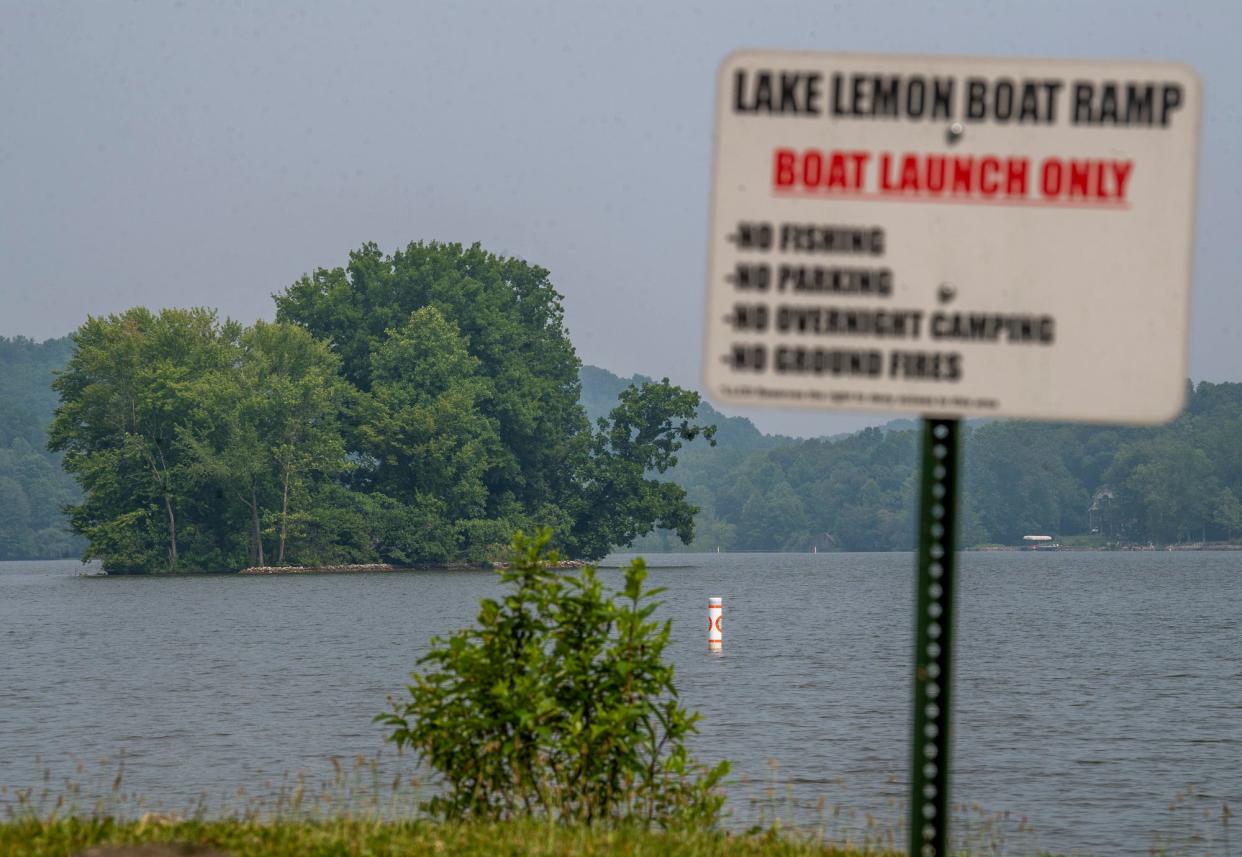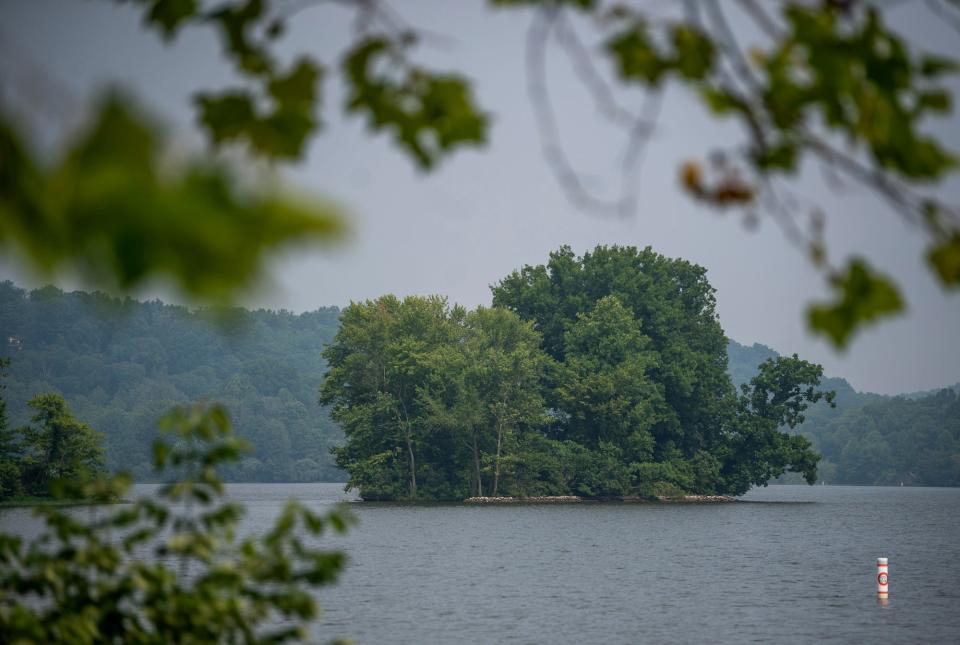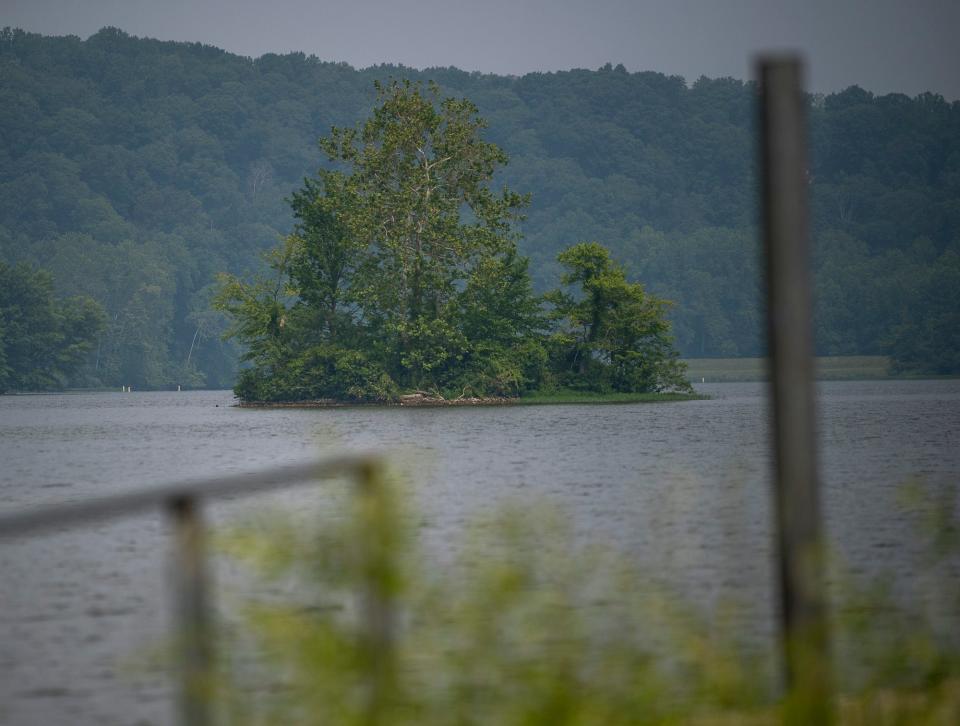Where is Cemetery Island? A look at one of Monroe County's hidden histories

Just a few weeks ago, David Lemon was on a pontoon in Lake Lemon, regaling visiting residents of Meadowood with local legends before they docked and headed back to shore for a dinner.
Lemon acted as the crew's tour guide, pointing out notable landmarks and recounting the area's little known history. Most of the stories were innocuous and any questions raised had simple answers — "Who lives in that house?" or "What is that called?"
But then the conversation turned to the small, lonely islet, rippling waves lapping at its stone-fringed borders. The locals call it Cemetery Island, Lemon told them.
The air around him shifted, a hush falling over the reservoir.
"I mean, most people think there's graves there," Lemon said. "That it's actually a cemetery."
Their assumption isn't far from the truth.

Lake Lemon's Cemetery Island: tomes and tombstones
This lore isn't based on fiction — Cemetery Island was formerly a gravesite, about 70 years ago. And it wasn't always an island.
Before the 1,650-acres in northeastern Monroe County became a reservoir, Lake Lemon was simply valleyed farmland. The so-christened Fleener community had a post office, a bridge, a church (named after the aforementioned bridge) and, of course, a cemetery. About 140 people were buried on this low-rise hill, with some gravestones dating back to the late 19th century.
In the early 1950s, then-mayor Tom Lemon began campaigning for the construction of a new lake, which would be used as a drinking water source for the city of Bloomington's expanding population. This reservoir, later named after the mayor and David Lemon's second cousin, would come to fruition in 1953.
Before the valley could be filled, however, the city had to relocate a small but dedicated community. Farmland that was passed down through family generations was bought by officials. The Bridge Church's building was placed on timber slats and wheeled down Tunnel Road to a new location.
According to the Monroe County History Center, the city facilitated the removal of more than 100 graves — both bone and headstone were relocated to other cemeteries in the county. For example, historical records show a Civil War veteran and his family were moved to Rose Hill Cemetery.
While the graves were removed, the hill stayed at its previous elevation, even though it would crest above the new lake level. Since there's no recorded explanation that the history center has been able to recover, it's all the more tempting to speculate.
"I don’t know why they left the island. They had to clear it out anyway," Lemon said. "Maybe they were afraid there were graves still there."

Lake Lemon today: boating, fishing, more
Lake Lemon's role as a primary drinking water source for Bloomington was short-lived, ending in the late 1960s. The reservoir now serves as the city's back up water supply. Just like other man-made lakes in the county, Lake Lemon now offers boating, fishing and swimming for residents and visitors alike.
While their gravestones may have been removed, some family names have stayed in the Lake Lemon lexicon in other ways — the Riddle family is now immortalized by Riddle Point Park, where people can visit and catch a glimpse of the former cemetery.
Reach Rachel Smith at rksmith@heraldt.com.
This article originally appeared on The Herald-Times: The history of Monroe County's Cemetery Island in Lake Lemon

